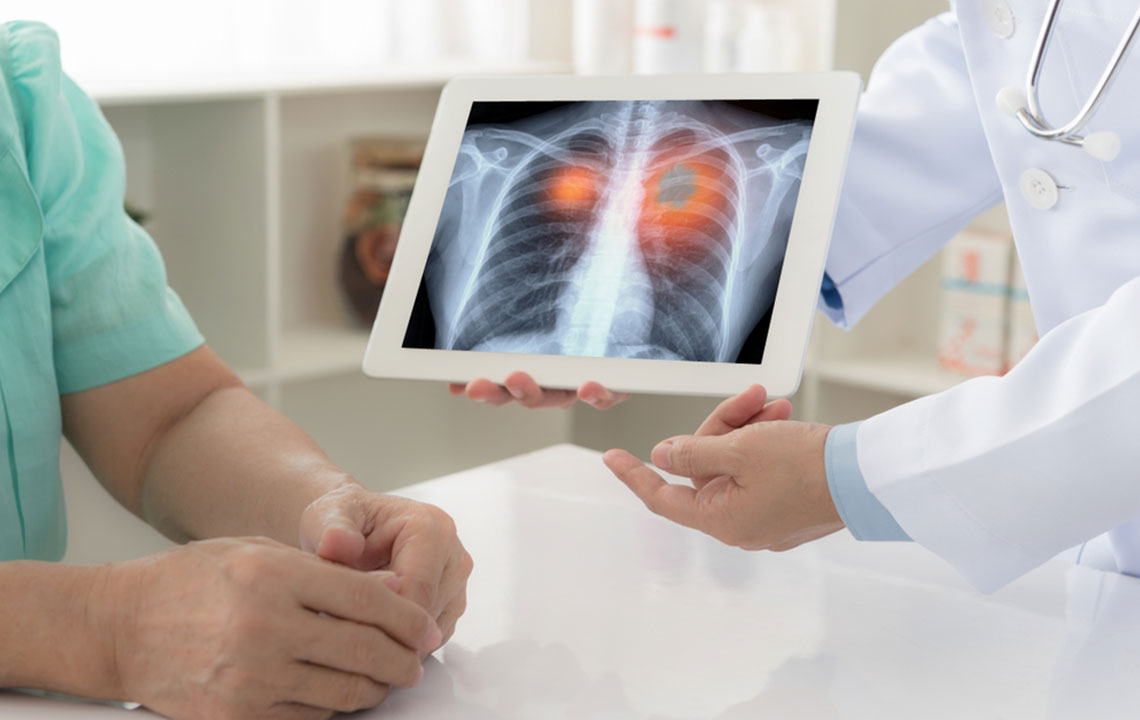
The look into the stages of lung cancer
Lung cancer is a condition in which cells in the lungs grow at an abnormal rate. It is of two common types: small-cell lung cancer (SCLC) and non-small-cell lung cancer (NSCLC). Among these, NSCLC is the most commonly diagnosed type. It makes up around 80%-85% of all cases, out of which 30% develop in the cells found in the lining of the body’s cavities and surfaces. On the other hand, small-cell lung cancer (SCLC) diagnosed only 15%-20% of the time. SCLC comparatively progresses faster than NSCLC; while this means that it has higher chances of responding to chemotherapy, there is a big chance that it can’t be cured with treatment.
In certain cases, lung cancer tumors have both SCLC and NSCLC cells.
Stages
Diagnosing the stage of lung cancer is important as it provides information on how far cancer has spread and helps in deciding the course of treatment. Any patient has a higher chance of receiving curative treatment if the disease is diagnosed in its initial stages. This is especially true as there are no noticeable symptoms in early stages of lung cancer. Both types of lung cancers have different stages.
The stages of non-small-cell lung cancer are
- Stage 1
Cancer cells are present in the lung, but are still contained inside the organ. - Stage 2
Cancer cells have spread to lymph nodes close to the lungs. - Stage 3
Cancer cells have radiated to the centre of the chest. - Stage 3A
Cancer cells present in lymph nodes have infected the chest on one side. - Stage 3B
Cancer cells have traveled to lymph nodes on the opposite lung. - Stage 4
Both lungs have been infected by cancer along with organs close to the lungs.
SCLC consists of two major stages called limited stage and extensive stage. The limited stage involves the presence of cancer cells in one lung and lymph nodes situated nearby.
The extensive lung cancer stages imply that cancer has radiated
- Completely in a single lung
- To both lungs
- To lymph nodes situated on the opposite side of the chest
- To the fluid surrounding the lung
- To the bone marrow




